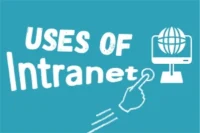Complete CSS Guide: Learn CSS from Basics to Advanced
Published: 3 Jul 2025
CSS (Cascading Style Sheets) is a style sheet language used to describe the presentation of an HTML document. It controls layout, colors, fonts, and overall visual appearance. Without CSS, web pages would look plain and unstyled.
Why CSS is Important:
- Separates content from design
- Makes styling consistent and reusable
- Enables responsive, mobile-friendly layouts
CSS Syntax and Selectors
Basic Syntax
selector {
property: value;
}
Types of Selectors
- Universal Selector: * {}
- Element Selector: p {}
- Class Selector: .class {}
- ID Selector: #id {}
- Group Selector: h1, h2 {}
- Descendant Selector: div p {}
Types of CSS
Inline CSS
<p style=”color: red;”>This is red text.</p>
Internal CSS
<style>
p { color: red; }
</style>
External CSS
<link rel=”stylesheet” href=”styles.css”>
Tip: Use external CSS for better maintainability and scalability.
Styling Text and Fonts
- font-family: Sets the font
- font-size: Adjusts text size
- color: Changes text color
- line-height, letter-spacing, text-align
Example:
body {
font-family: Arial, sans-serif;
font-size: 16px;
color: #333;
}
Box Model Explained
The CSS box model includes:
- Content – The actual content
- Padding – Space around content
- Border – Surrounds padding
- Margin – Space outside border
Example:
div {
margin: 20px;
padding: 10px;
border: 1px solid #000;
}
Backgrounds and Borders
- background-color, background-image, background-size
- border-width, border-style, border-radius
Example:
.card {
background: linear-gradient(to right, #ff7e5f, #feb47b);
border-radius: 10px;
}
Positioning and Layout
- position: static | relative | absolute | fixed | sticky
- float, clear
- z-index
Example:
.box {
position: absolute;
top: 50px;
left: 100px;
z-index: 10;
}
Flexbox Layout System
Flexbox is a one-dimensional layout method ideal for rows or columns.
Key Properties:
- display: flex
- flex-direction
- justify-content
- align-items
Example:
.container {
display: flex;
justify-content: center;
align-items: center;
}
Grid Layout System
CSS Grid is a two-dimensional system for complex layouts.
Key Properties:
- display: grid
- grid-template-columns, grid-template-rows
- grid-gap
Example:
.grid-container {
display: grid;
grid-template-columns: repeat(3, 1fr);
gap: 20px;
}
Responsive Design with CSS
Responsive design ensures your site looks good on all devices.
Media Queries:
@media (max-width: 600px) {
body {
background-color: lightblue;
}
}
Use viewport units (vw, vh) and percentages for fluid layouts.
Pseudo-classes and Pseudo-elements
Pseudo-classes:
- :hover, :focus, :nth-child(n)
Pseudo-elements:
- ::before, ::after
Example:
a:hover {
color: red;
}
CSS Variables and Custom Properties
Define reusable values using variables.
Example:
:root {
–main-color: #3498db;
}
.button {
background-color: var(–main-color);
}
CSS Best Practices and Tips
- Use external stylesheets
- Write modular and reusable CSS
- Use shorthand properties
- Avoid !important unless necessary
- Organize styles logically
Advanced CSS Topics
CSS Transitions
.button {
transition: background-color 0.3s ease;
}
CSS Animations
@keyframes fadeIn {
from { opacity: 0; }
to { opacity: 1; }
}
.box {
animation: fadeIn 1s ease-in-out;
}
Introduction to SASS/SCSS
- Use variables, nesting, and functions
- Makes large-scale CSS more manageable
Live Examples and Practice
Test your CSS code online:
Summary
- CSS enhances the visual presentation of web content
- Learn the box model, positioning, flexbox, and grid
- Responsive design is essential in modern web development
Next Steps:
- Master CSS by building real projects
- Learn CSS frameworks like Bootstrap or Tailwind
- Start exploring JavaScript for interactivity
FAQs
Below are some of the most commonly asked questions about CSS. These will help you better understand how CSS works and how to apply it effectively in your web projects.
CSS (Cascading Style Sheets) is a language used to style HTML elements on web pages. It controls layout, colors, fonts, and responsiveness.
CSS can be applied in three ways: Inline, Internal (within <style> tags), and External (linked CSS files). External CSS is the most scalable and widely used.
The box model includes four parts: content, padding, border, and margin. It defines how elements are spaced and sized in a layout.
Classes (e.g., .button) can be used multiple times on a page, while IDs (e.g., #header) should be unique per page.
Flexbox is a layout model in CSS that allows you to create responsive layouts with ease, especially for 1D (row or column) arrangements.
CSS Grid is a 2D layout system (rows and columns), whereas Flexbox is 1D. Grid is better for full-page layouts; Flexbox is ideal for component-level styling.
Pseudo-classes (e.g., :hover) apply styles based on user interaction. Pseudo-elements (e.g., ::before) style specific parts of an element.
Use media queries (@media) to apply different styles based on screen size, and use flexible units like %, vw, and vh.
Keep styles modular, avoid !important, use external stylesheets, and name classes clearly (BEM methodology is popular).

- Be Respectful
- Stay Relevant
- Stay Positive
- True Feedback
- Encourage Discussion
- Avoid Spamming
- No Fake News
- Don't Copy-Paste
- No Personal Attacks

- Be Respectful
- Stay Relevant
- Stay Positive
- True Feedback
- Encourage Discussion
- Avoid Spamming
- No Fake News
- Don't Copy-Paste
- No Personal Attacks





